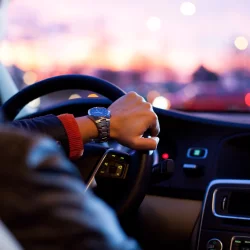Think You’re OK to Drive?
Alcohol can impair an individual's judgment. The standard of 0.08% blood alcohol content as the limit for sober driving is mostly subjective. Someone may feel sloppy drunk after a single glass of wine, while others may feel 'okay' at a BAC of 0.08% or higher. Even when a sober driver is responsible for the collision, the driver with the BAC of .01% will likely get accused of causing the accident.
Evidence shows that alcohol, even at low levels, reduces attention, vision, judgment, and coordination, double the risk of DUI crashes.
Everyone has their own limits.
One person can deal with only two brews at supper. The other may handle their liquor well and be okay to drive after a few more bottles.
The legal definition of intoxication is having a blood alcohol content of between 0.07-0.09%.
Even though legal intoxication is when BAC reaches about 0.08%, however, impaired reasoning, judgment, and memory can start at a BAC of 0.04-0.06%. The warmth and the rush may lead to impaired motor skills and increase the risk of an injury accident.
Each state has its laws.
For those who are just getting started with alcohol use, impaired judgment, and grandiosity feelings may happen at BAC of 0.02-0.03% or even lower. Drunk driving charges can be brought up against anyone, even those with a BAC of 0.01% under zero-tolerance laws.
Illinois and other states like Texas, North Carolina, Pennsylvania, Arizona, Alaska, Oregon, Minnesota, Utah, Wisconsin, Illinois, Michigan, Maine, Maryland, and Oklahoma have zero-tolerance laws.
In states with zero-tolerance laws, drivers below 18 should not get behind the wheel when their BAC is 0.01%. Some other states have capped the legal BAC for teens at 0.02%.
Women and men may have different BACs after the same amount of wine.
Scientists assert that women are less able to digest alcohol before it gets into circulation. Researchers from the Veterans Affairs Medical Center in the Bronx and the University School of Medicine in Trieste, Italy, recently found that women produce less alcohol dehydrogenase than men. This is an enzyme that breaks down alcohol before it gets absorbed into the bloodstream.
After a single glass wine (148 ml), most women would have a BAC of above 0.08%, while for men, it would be lower. Size and body mass index matters too. Petite people may feel the effects of alcohol faster than burly individuals. Women and small individuals have the highest risk of causing wrongful death on the road if they get behind the wheel after drinking alcohol.
One should buy a personal breathalyzer.
The breathalyzer generally provides an accurate determination of blood alcohol content. Estimations are a dime a dozen online, where self-proclaimed experts say that two beers would have x and x BAC levels. Trusting these estimations can be disastrous. BAC levels depend on many things, including age, gender, and body size.
A personal breathalyzer goes at around $40 on Amazon. There are also disposable models that one can use temporarily after a night of fun and before getting behind the wheel. Individuals should not trust how they feel; they should take the breathalyzer test. Lives are at stake when one drives under the influence.
A few apps have emerged that can calculate BAC levels after people input their age, gender, weight, and other details. While these calculations may not be accurate, they can be a good basis for an individual to understand if they are sober enough to drive.
The golden rule is 'don't drink and drive.' It doesn't matter how little people believe they are intoxicated; they should call a cab or use a designated driver. The lives of others depend on it.
More to Read:
Previous Posts:



